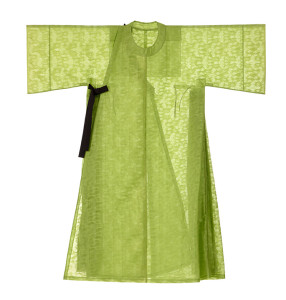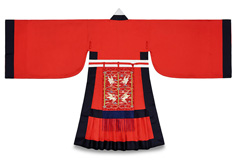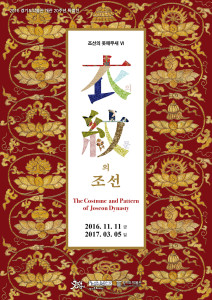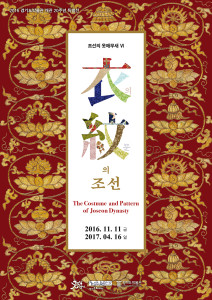MUSENET
-
The Costume, the Pattern of Joseon Dynasty: Women’s Ceremonial Robe, Green Wonsam
[Online Exhibition]
Wonsam as women’s ceremonial robe was originally reserved for the upper class women but was allowed as bridal attire for lower class women in the late Joseon dynasty. -
The Costume, the Pattern of Joseon Dynasty: Confucian Scholars’ Ceremonial Robe, White Sim-ui
[Online Exhibition]
Sim-ui, the symbol of confucian scholar, had a separate upper bodice part and a lower skirt part that were stitched together in one piece and reached the ankle. There were two types of Sim-ui: one with a straight collar, and another with square collar -
The Costume, the Pattern of Joseon Dynasty: Government Officials’ Uniform, Black Dallyeong
[Online Exhibition]
Dallyeong is named after a round collar shape. It was an official’s daily uniform, but non-officials also wore it as their bridal wear during the Joseon dynasty. The attire consisted of Dallyeong, Samo, Poomdae, and Hwa. The general public were not allowed to wear this robe, but they could especially wear it during their wedding ceremony. -
The Costume, the Pattern of Joseon Dynasty: Officials’ Ceremonial Attire, Red Jobok
[Online Exhibition]
Jobok was the most formal and splendid attire for officials. The harmony of red and gold color reflected its beauty and dignity. -
What Is GyeongGi Folk Culture? Close
- Venue/ Gyeonggi Provincial Museum
- Period/ 2016.11.11(Fri) ~ 2017.04.16(Sun)
A special exhibition prepared using the results of academic investigation and research studies conducted by the GyeongGi Provincial Museum and the National Folk Museum of Korea. This exhibition was planned in order to discover the folklore, traditions, and ways of life, including work and recreation, of the lives that have continued on throughout GyeongGido
-
What Is GyeongGi Folk Culture? Close
- Period/ 2016.11.11(Fri) ~ 2017.04.16(Sun)
A special exhibition prepared using the results of academic investigation and research studies conducted by the GyeongGi Provincial Museum and the National Folk Museum of Korea. This exhibition was planned in order to discover the folklore, traditions, and ways of life, including work and recreation, of the lives that have continued on throughout GyeongGido








